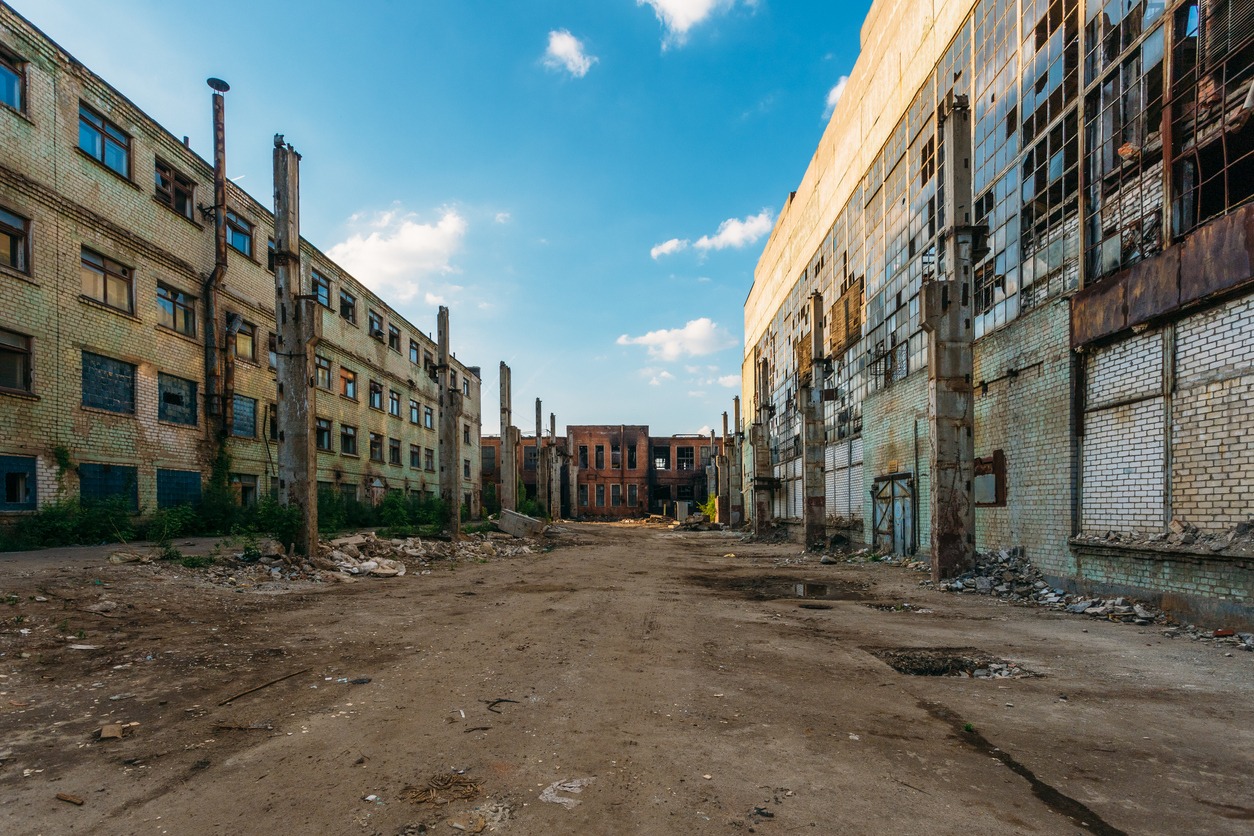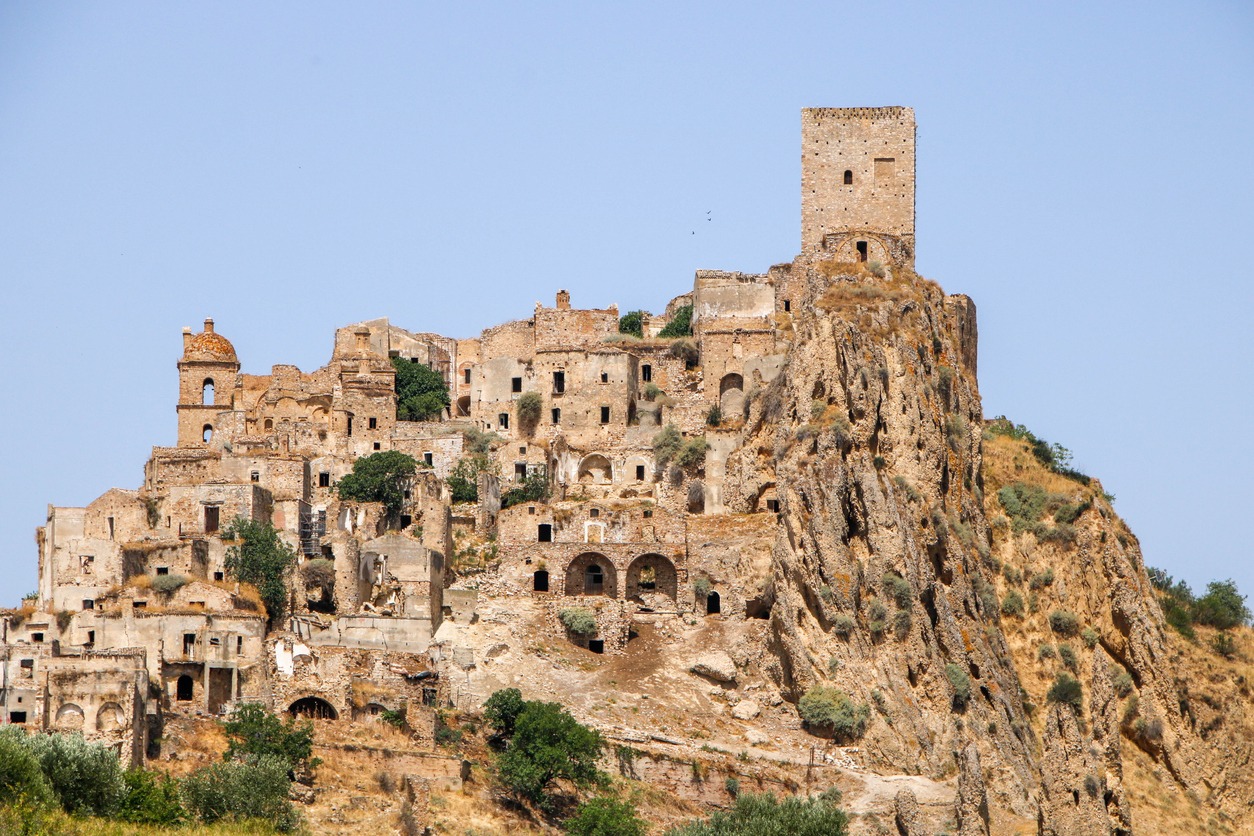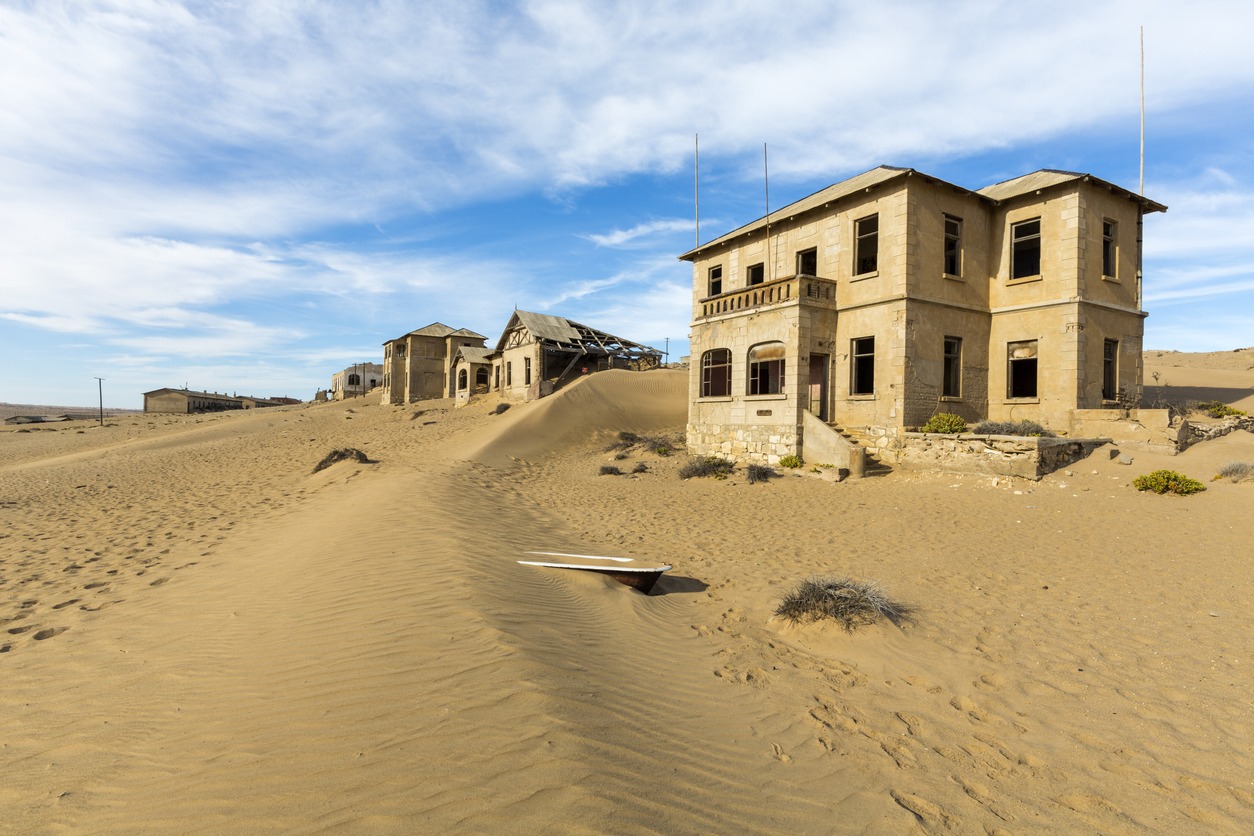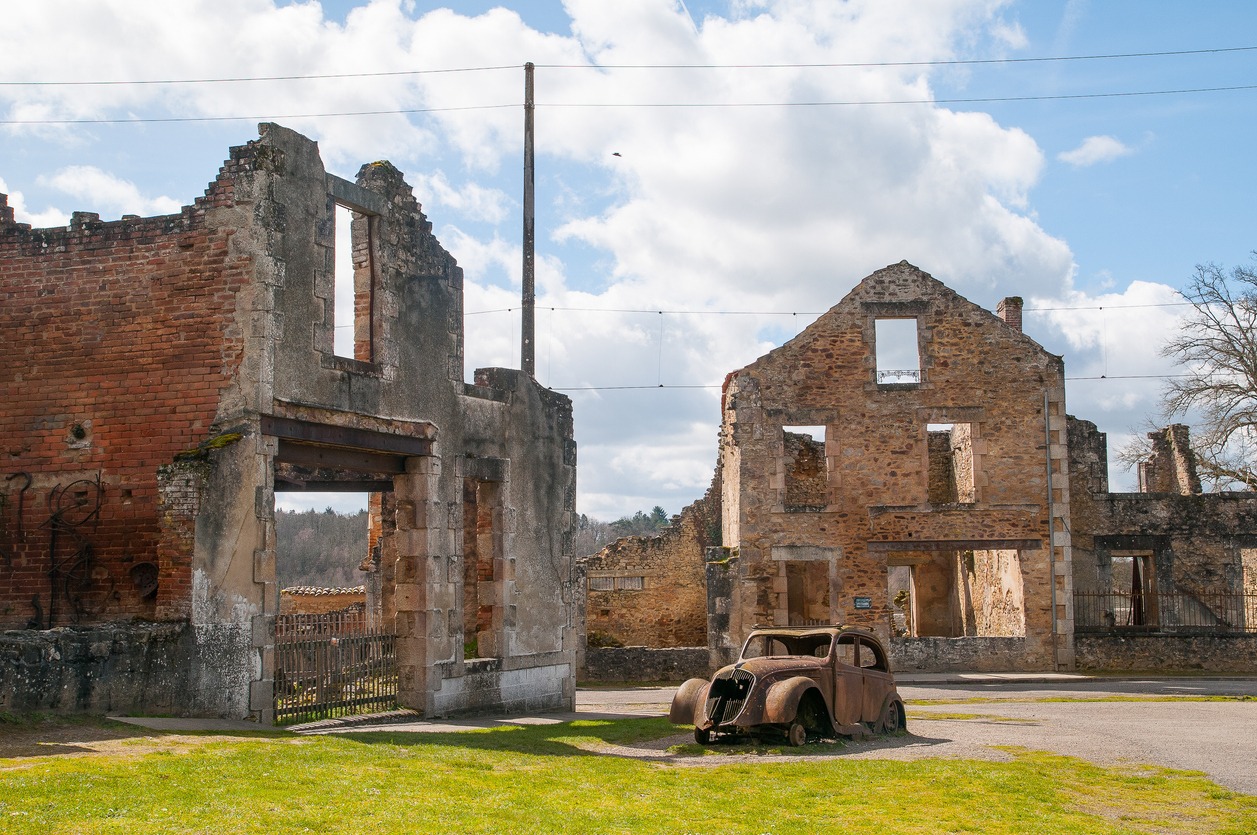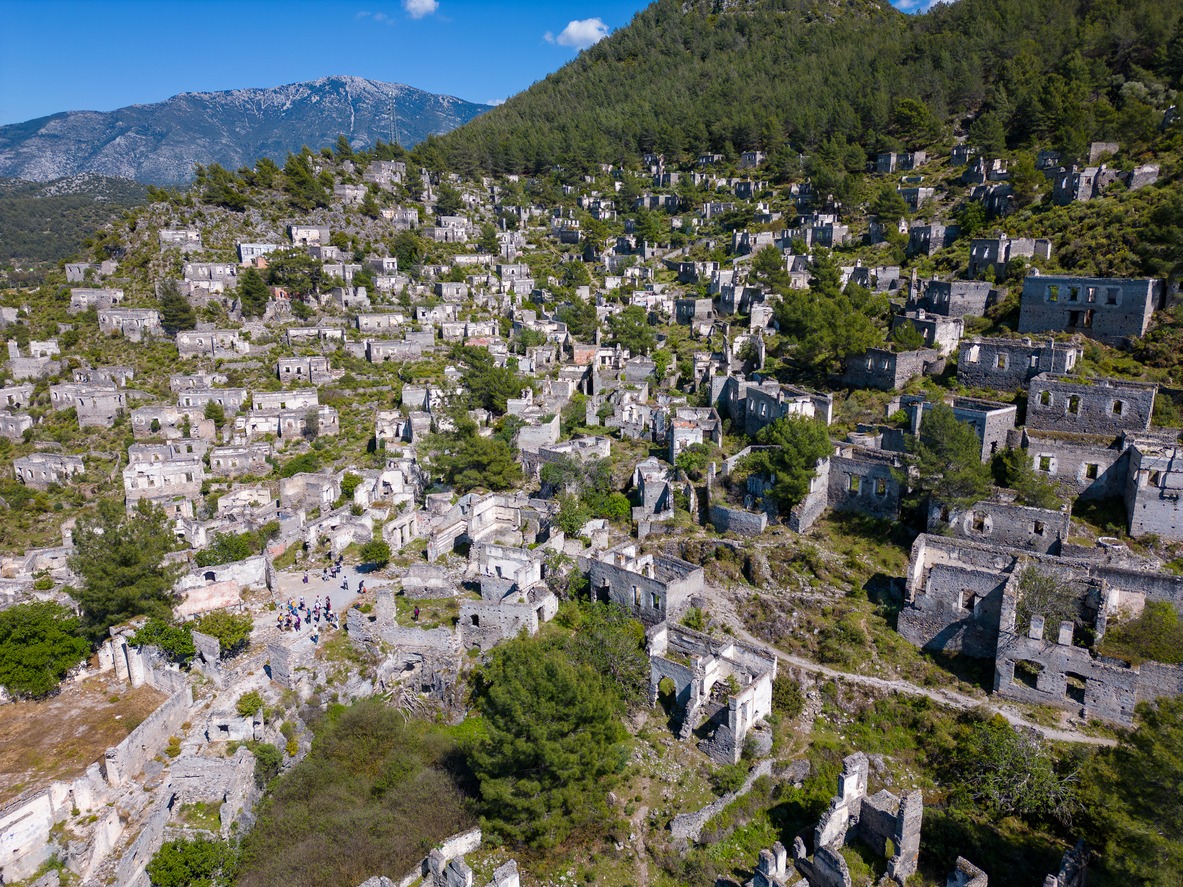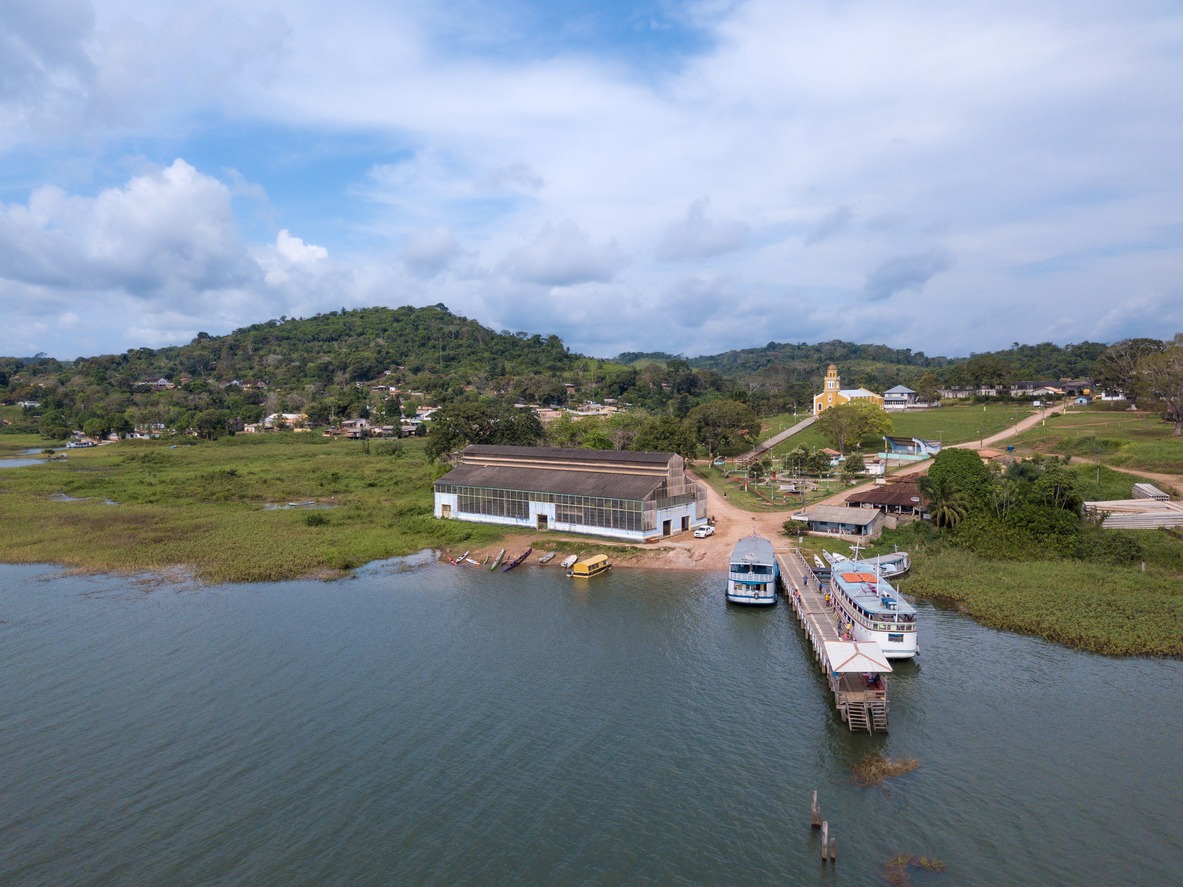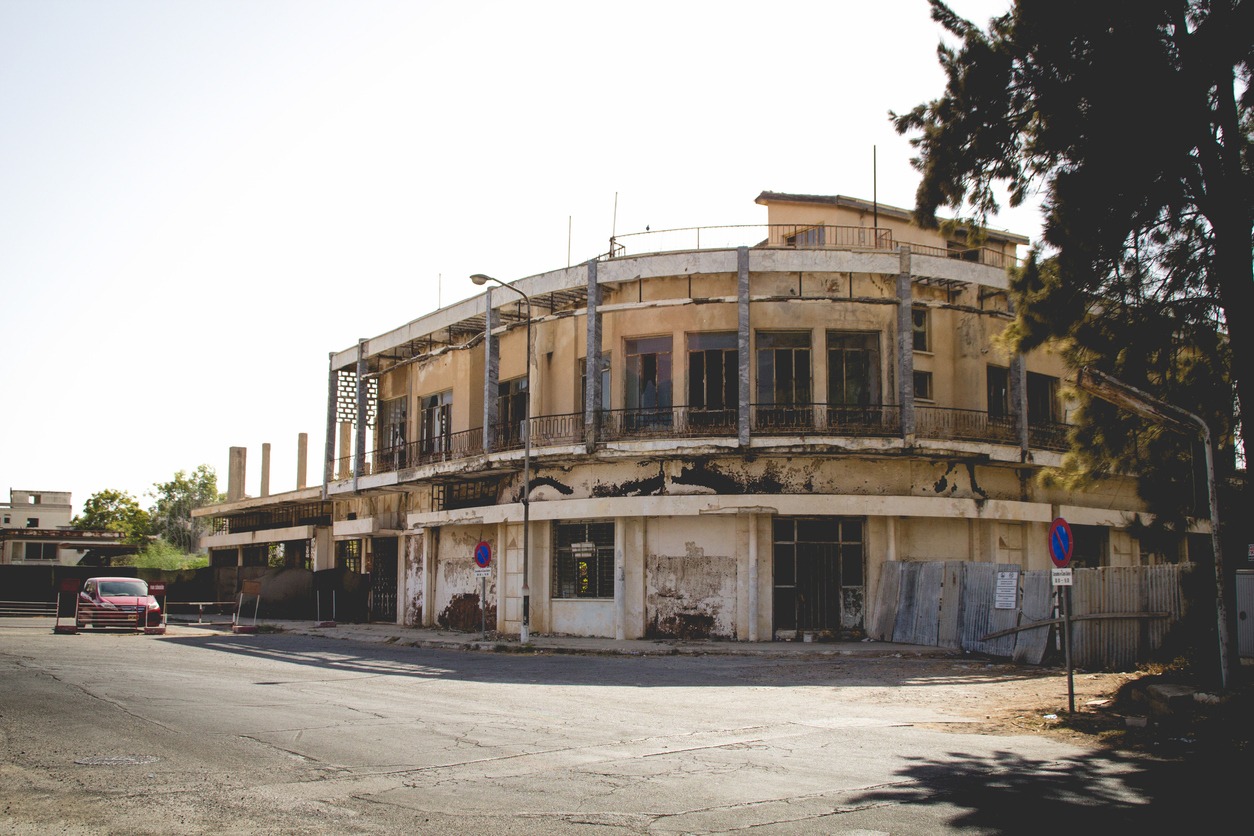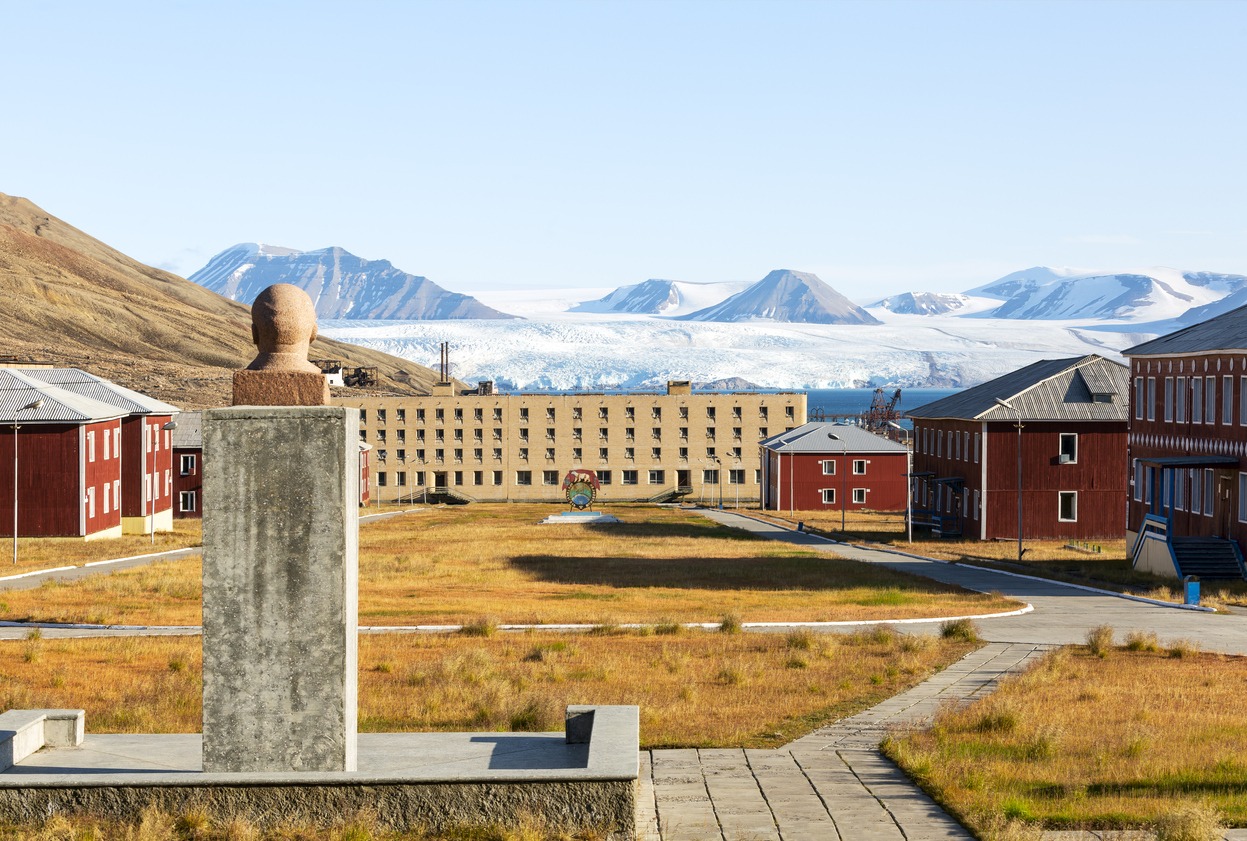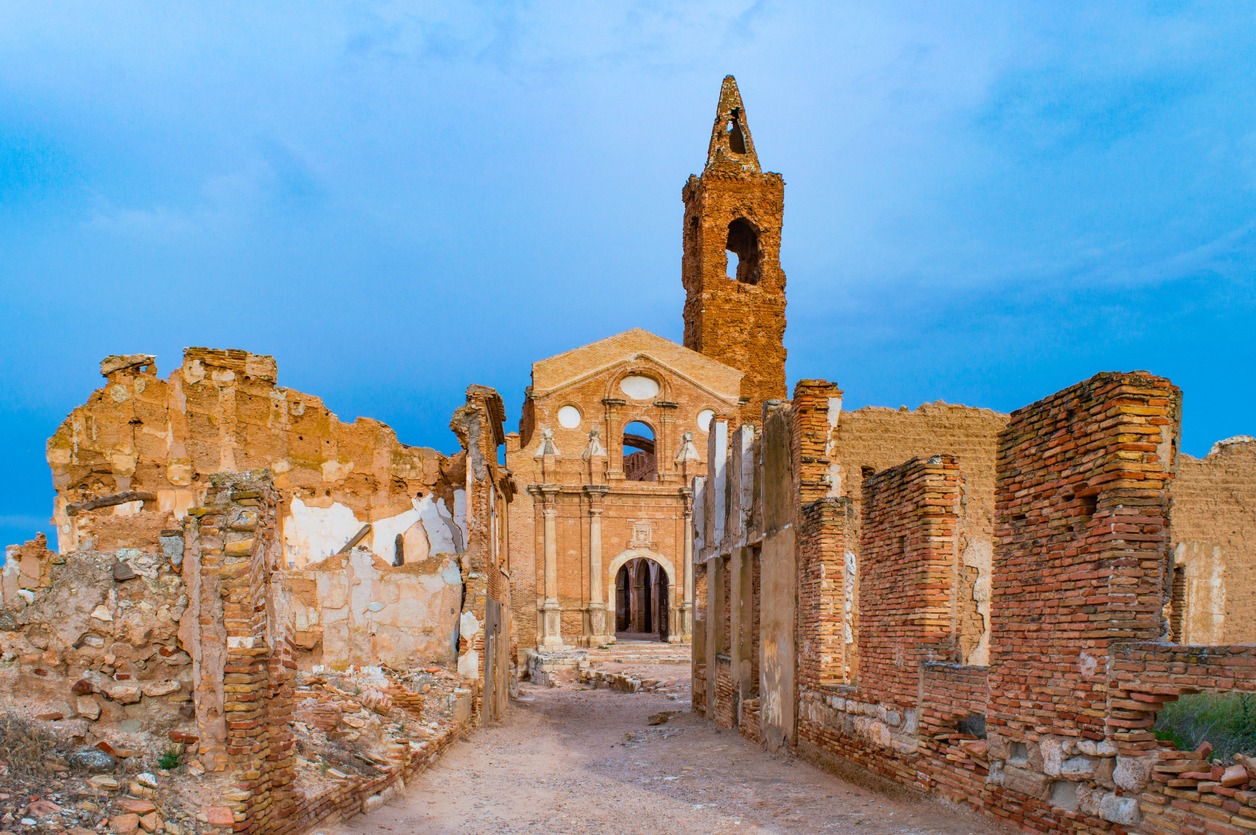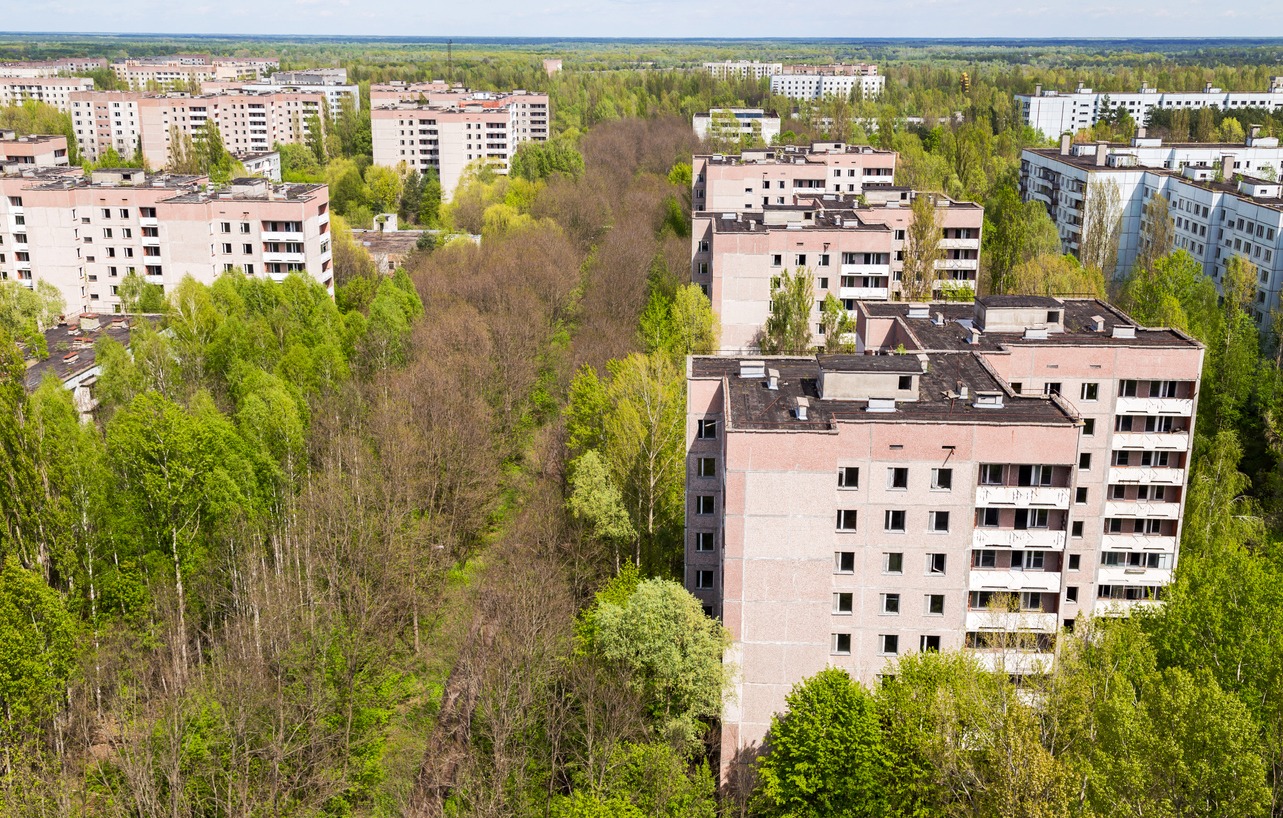Have you ever wondered about ghost towns? These abandoned places, scattered across the globe, are like time capsules, each with a unique story to tell. Picture a town where life once thrived – streets bustling, homes filled with laughter, markets echoing with the chatter of daily commerce. Then, for various reasons, these activities cease, leaving behind empty shells of buildings, silent streets, and an eerie, almost mystical atmosphere.
Ghost towns often emerge from a mix of economic, natural, or sometimes even political reasons. For instance, a mining town might spring up overnight during a gold rush, flourishing with life and dreams. But as soon as the resources dry up, so does the town, leaving behind a skeleton of what once was. Other times, natural disasters or environmental changes force inhabitants to leave, abandoning their homes to the elements.
Each abandoned city tells a tale of a community that once was, offering a haunting yet fascinating glimpse into a world that used to be. So, let’s embark on a journey through these ghost towns, uncovering the secrets they hold and the stories they whisper to those who dare to visit.
Craco, Italy
Craco, located in the region of Basilicata in southern Italy, is a captivating ghost town with a history that dates back to the 8th century. Originally settled due to its strategic position atop a hill, Craco was a thriving medieval town known for its agriculture and craftsmanship. Over the centuries, it faced various challenges, including plagues, bandit attacks, and political strife. However, it was natural disasters, particularly landslides and earthquakes, that played a significant role in its gradual abandonment. In 1963, a landslide forced the relocation of the population to a nearby valley, and a severe earthquake in 1980 sealed its fate as a modern ghost town.
Today, Craco stands as a stunning example of medieval architecture frozen in time. Its winding streets abandoned buildings, and the imposing remains of the Norman tower offer a hauntingly beautiful glimpse into the past. The town has become a popular destination for tourists and filmmakers alike, drawn by its eerie beauty and the stories encapsulated within its crumbling walls.
Kolmanskop, Namibia
Kolmanskop, nestled in the Namib Desert of Namibia, is an intriguing ghost town with a history deeply rooted in the early 20th-century diamond rush. Discovered in 1908 by a railway worker who found a diamond in the area, Kolmanskop rapidly transformed from a barren desert into a flourishing mining town. At its peak, it was a bustling hub, equipped with modern amenities rare for that time and place, including the Southern Hemisphere’s first X-ray machine, a hospital, a school, a ballroom, and even an ice factory. The town thrived as long as the diamonds were plentiful, but after World War I, the diamond fields began to deplete, leading to the decline of Kolmanskop.
By the 1950s, Kolmanskop was completely abandoned, left to the mercy of the harsh desert climate. Today, it stands as a haunting relic of a bygone era, with its once-luxurious buildings now partially swallowed by the shifting sands. The encroaching desert has created a surreal landscape, with sand-filled rooms and derelict structures creating a photographer’s paradise.
Oradour-sur-Glane, France
Oradour-sur-Glane, located in the Limousin region of France, bears a tragic and poignant history from World War II. On June 10, 1944, in a harrowing act of retribution, a Nazi Waffen-SS unit annihilated the village, tragically killing 642 inhabitants, including women and children. The massacre was in response to the German belief that an SS officer was being held captive by the French Resistance in the village. The troops encircled the town, gathered the inhabitants under false pretenses, and then methodically murdered them. The men were shot in barns while the women and children were locked in the church, which was then set ablaze. Following the massacre, the village was looted and set on fire, leaving a smoldering ruin.
In the aftermath of the war, French President Charles de Gaulle declared that the ruins of Oradour-sur-Glane should remain untouched as a memorial to the cruelty of the Nazi occupation and as a reminder of the atrocities of war. Today, the site stands as a powerful and somber open-air museum, with the scorched remains of buildings, rusted cars, and personal belongings left as they were on that fateful day.
Humberstone and Santa Laura, Chile
Humberstone and Santa Laura are two former saltpeter (nitrate) refineries located in the Atacama Desert of northern Chile, once the epicenter of the global nitrate industry. These towns flourished in the late 19th and early 20th centuries, playing a crucial role in Chile’s economic development. Nitrates, extracted and processed in these refineries, were a highly sought-after resource, used primarily as a fertilizer and in the production of explosives. At their peak, Humberstone and Santa Laura were bustling communities, complete with residential areas, schools, theaters, and social clubs, reflecting a diverse mix of Chilean and immigrant populations drawn by the nitrate boom.
However, with the advent of synthetic nitrate production in the 1930s, the demand for natural nitrates plummeted, leading to the gradual decline of these towns. By the 1960s, both Humberstone and Santa Laura were completely abandoned, leaving behind ghost towns in the midst of the desert. Today, they serve as UNESCO World Heritage Sites, preserving the unique industrial and cultural heritage of the nitrate era.
Kayaköy, Turkey
Kayaköy, located near the southwestern coast of Turkey, is a hauntingly beautiful ghost town with a history shaped by cultural and political shifts in the early 20th century. Originally known as Levissi, it was home to a sizeable Greek Orthodox Christian community living harmoniously alongside Turkish Muslims for centuries. The village’s architecture, with stone houses, churches, and communal buildings, reflected a blend of Greek and Turkish cultural influences. However, the end of the Greco-Turkish War in 1923 led to the signing of the Treaty of Lausanne, which mandated a population exchange based on religious identity between Greece and Turkey. This resulted in the displacement of the Greek inhabitants of Levissi to Greece, leaving their homes behind.
Today, Kayaköy stands as a poignant symbol of this turbulent period in Greek-Turkish history. The town’s over 500 abandoned and now roofless houses, two Greek Orthodox Churches, and various other buildings stretch across a hillside, creating a striking and somber landscape. The site has become a place of historical significance and a popular destination for tourists and history enthusiasts.
Fordlandia, Brazil
Fordlandia, nestled in the heart of the Amazon rainforest in Brazil, stands as a striking example of a failed industrial and social experiment from the early 20th century. It was the brainchild of American industrialist Henry Ford, who, in 1928, sought to create a rubber plantation to supply his automobile factories with a steady and cost-effective supply of raw materials. Ford envisioned more than just a plantation; he aimed to establish a model American town in the Amazon, complete with modern housing, schools, and hospitals, as well as typical American amenities like a golf course and swimming pools. The goal was to cultivate both rubber and a way of life, blending industrial enterprise with Ford’s idealistic views on community and work ethic.
However, Fordlandia’s story is one of ambition clashing with reality. The project faced immense challenges, including the inhospitable climate, the inexperience of American managers with the local environment, and resistance from indigenous workers to Ford’s imposed lifestyle and work regulations. The rubber trees planted in dense plantations fell victim to leaf disease, a problem not faced in Southeast Asia, where rubber trees grew dispersed and more resilient to pests. By the 1940s, with synthetic rubber emerging as a more viable alternative, Fordlandia became obsolete, leading to its abandonment.
Varosha, Cyprus
Varosha, a district of the city of Famagusta in Cyprus, once epitomized the pinnacle of luxury and tourism in the Mediterranean. Before 1974, it was a flourishing beachfront paradise frequented by celebrities and renowned for its glamorous hotels, fine sandy beaches, and vibrant nightlife. The area’s development surged in the 1960s and early 1970s, transforming it into one of the most popular tourist destinations in the world. Varosha was not just a holiday spot; it was a symbol of opulence and modernity, boasting impressive urban development, with high-rise hotels and commercial centers lining its picturesque coastline.
However, the Turkish invasion of Cyprus in 1974, following a Greek-supported coup, dramatically altered Varosha’s fate. The district was seized by Turkish forces, and its inhabitants, mostly Greek Cypriots, fled amidst the conflict. Since then, Varosha has remained a ghost town, cordoned off by the Turkish military and left to decay in time. The once bustling streets and luxurious resorts now stand silent and empty, a stark contrast to the lively city it once was.
Pyramiden, Norway
Pyramiden, located on the Svalbard archipelago in Norway, is a unique and remote ghost town in the Arctic that stands as a relic of the Soviet era. Established by Sweden in 1910 and sold to the Soviet Union in 1927, Pyramiden was developed into a mining settlement primarily for the extraction of coal. At its zenith, the town boasted a population of over 1,000 residents and was a model of Soviet industry and community life.
It was equipped with modern amenities uncommon in such a remote location, including the world’s northernmost statue of Lenin, a cultural center, a swimming pool, and even a grand piano. The community was a melting pot of Soviet citizens who worked and lived in this Arctic outpost, enduring the extreme polar conditions.
However, in 1998, following the dissolution of the Soviet Union and the subsequent economic hardships, the coal mine was deemed unprofitable, and Pyramiden was abruptly abandoned. Today, it stands frozen in time, with buildings and infrastructure left much as they were in the late 1990s.
Belchite, Spain
Belchite, located in the Zaragoza province of Spain, is a poignant historical site, embodying the scars and stories of the Spanish Civil War. Prior to the war, it was a thriving town, rich in history and culture, dating back to the Roman era. However, during the Spanish Civil War in the late 1930s, Belchite became a focal point of fierce battles between Franco’s Nationalist forces and the Republican Army. The Battle of Belchite in 1937 was particularly brutal, resulting in significant casualties on both sides and leaving the town in ruins. The destruction was so extensive that Franco decided to leave the old town as it was, a testament to the Nationalist victory, and built a new town nearby.
Today, the ruins of old Belchite stand as a haunting and powerful memorial to the war’s devastation. The town’s remains, including bullet-riddled walls, crumbling churches, and shattered homes, are frozen in time, evoking a sense of loss and remembrance.
Wittenoom, Australia
Wittenoom, situated in the remote Pilbara region of Western Australia, stands as a cautionary tale of the grave consequences of industrial negligence and environmental contamination. Established in the 1930s, Wittenoom grew around blue asbestos mining, which was a highly lucrative industry at the time. The town flourished in the mid-20th century, attracting workers and their families with the promise of jobs and prosperity. However, the dangers of asbestos were not widely acknowledged or understood, and Wittenoom’s residents were unknowingly exposed to deadly asbestos dust and fibers, leading to numerous health issues over the years, including mesothelioma, a lethal cancer caused by asbestos exposure.
By the late 1960s, the health risks associated with asbestos mining became more evident, leading to the gradual decline of the industry and the eventual closure of the mine in 1966. However, the legacy of asbestos mining had already left a tragic mark on the town and its former residents. Recognizing the severe health hazard, the government officially declared Wittenoom a contaminated site and removed it from official maps, discouraging habitation. Today, the ghost town of Wittenoom is a grim reminder of the deadly impact of industrial irresponsibility.
Pripyat, Ukraine
Pripyat, Ukraine, serves as a haunting reminder of one of the worst nuclear disasters in history. Founded in 1970, this city was designed as an ideal Soviet community to serve the nearby Chernobyl Nuclear Power Plant. It was a symbol of Soviet engineering prowess and urban planning, boasting modern facilities, including a cultural center, a swimming pool, an amusement park, and spacious apartments. The population, comprising mostly plant workers and their families, enjoyed a high standard of living with access to excellent amenities, embodying the Soviet dream of a prosperous, technologically advanced society.
However, the catastrophic nuclear accident at the Chernobyl power plant on April 26, 1986, marked a tragic turn for Pripyat. The explosion and subsequent radiation release forced the evacuation of the entire city, turning it overnight into a ghost town. The residents, who hastily left believing their displacement to be temporary, never returned. Today, Pripyat stands frozen in time, with personal belongings, children’s toys, and propaganda posters still in place, creating a poignant and eerie atmosphere.
Conclusion
Isn’t it fascinating how cities, once brimming with life and activity, can transform into ghost towns? These abandoned places scattered around the globe each tell a unique story, often a blend of human ambition, economic shifts, and the unforgiving forces of nature.
But what’s really striking is the diversity in the stories of these ghost towns. From the politically charged abandonment of Varosha in Cyprus to the tragic history of Oradour-sur-Glane in France, each ghost town carries the weight of its past, whether it’s a tale of industrial decline, natural disasters, or human conflict.
Visiting these places, or even just learning about them, feels like stepping into a different world, one that’s both haunting and fascinating. They remind us of the impermanence of human endeavors and the relentless march of time. Whether they’re cautionary tales about environmental degradation, like in Wittenoom, Australia, or reflections on the shifts in political tides, like Kayaköy in Turkey, ghost towns are powerful symbols of change, loss, and, sometimes, resilience.
So, when we talk about ghost towns, we’re not just talking about abandoned buildings and silent streets; we’re talking about chapters of human history that continue to captivate our imagination and offer lessons for the future. It’s a humbling and intriguing journey through time, one that underscores the ever-changing nature of our world.
While examining the haunting allure of modern ghost towns reveals much about urban decline, it also invites curiosity about the enduring legacy of the world’s oldest cities. Which Cities Claim the Title of the Oldest in the World?’ contrasts these deserted spaces by exploring ancient urban centers that have remarkably withstood the test of time, continuing to thrive amidst centuries of change.

